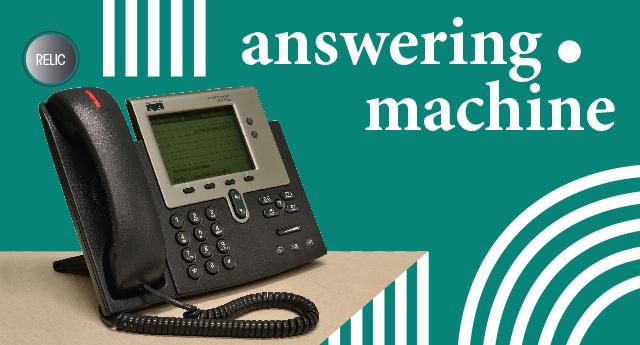Today, if you miss a call on your phone, it goes straight to voicemail and you can hear it later. Between the invention of the phone and the invention of the answering machine, however, you had to keep calling until you got someone on the line. How did the answering machine come to be, and why is it a staple of our phones today?
Danish engineer Valdemar Poulsen can be seen as the indirect inventor of the answering machine. While many people may not know who he is, he had a very key role in inventing the answering machine. He invented the telegraphone, which was a magnetic wire recorder that used a magnetizable medium that moved past a recording head. Poulsen demonstrated his invention at the 1900 World’s Fair, where he recorded the voice of Austrian Emperor Franz Josef. This is believed to be the oldest surviving magnetic audio recording to this day.
The inventor of the first automatic answering device for telephones is still unclear. Several men can stake claim to the invention of the answering machine. German inventor Ludwig Blattner, who invented the Blattnerphone as a system of recording and playback for early movies, had promoted the idea of the telephone answering machine in 1929 based on the Blattnerphone’s technology. In 1930, American physicist Clarence Hickman, who worked for Bell Laboratories (a subsidiary of AT&T at the time), developed methods for magnetic recording and recognition of speech patterns and electromechanical switching systems. He invented a tape-based answering machine in 1934. However, AT&T suppressed his invention because they feared his system would lead to fewer phone calls.
In 1931, William Schergens had a device with phonographic cylinders that could be used as an answering machine, and William Muller in 1935 had a device that could be considered an answering machine. However, Benjamin Thornton developed a machine to record voice messages from a caller, and filed a patent as early as 1930 (Number 1831331) which utilized a phonographic record for the recording medium.
The first commercial answering machine was the Tel-Magnet, which debuted in the United States in 1949. It played outgoing messages and recorded incoming messages on a magnetic wire, and cost $200 ($2,117 in today’s money). This was a steep sum for its time and it was not commercially successful. In the same year, the Electronic Secretary, an invention of Joseph Zimmerman and George Danner, utilized a 45 rpm record player for announcements and a wire recorder for message capture and playback. The Ansafone, a device invented by Japanese inventor Dr. Kazuo Hashimoto (who also held patents for Caller ID), came out in 1954 in Japan and reached the United States by 1960. PhoneMate also released a commercially viable answering machine in 1971 called the Model 400, which used a reel-to-reel tape that could hold 20 messages. Gordon Matthews invented the first commercial voicemail system in 1979, selling it to 3M later on.
By 1984, answering machines became more widely recognized in the United States. This was partially due to the breakup of AT&T on January 1, 1984, and partially due to the drastic reduction in price so that anyone with a phone could afford it. Dr. Hashimoto had also patented a digital answering machine in 1983 (US Patent 4,616,110), and AT&T also had the AT&T 1337. Dr. Hashimoto sued AT&T, but dropped the suit as the AT&T answering machine was very different from his patent. By 1991, the digital answering machine became widely available, allowing people to drop tapes entirely and use solid-state hardware.
Today, the answering machine is just another element of a smartphone, but it was interesting to see the development of such a machine stretch back over 120 years. The answering machine effectively eliminated the idea of a missed call—although today, missed calls are still a reality despite the convenience of having an answering machine we can fit in our pockets.
MyKuya gives you the option of getting a female or male runner, or a rider for a fixed cost per 30 mins. What’s great about the app is its mission to provide job opportunities for Filipinos. You get the help you need and also give help in return.
Also published in GADGETS MAGAZINE August 2018 Issue.
Words by Jose Alvarez
